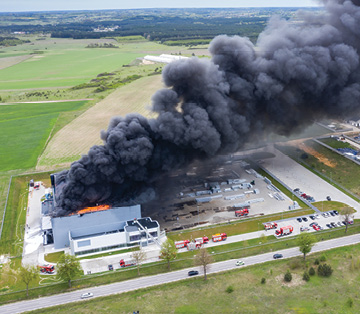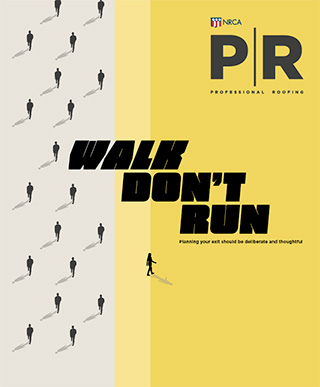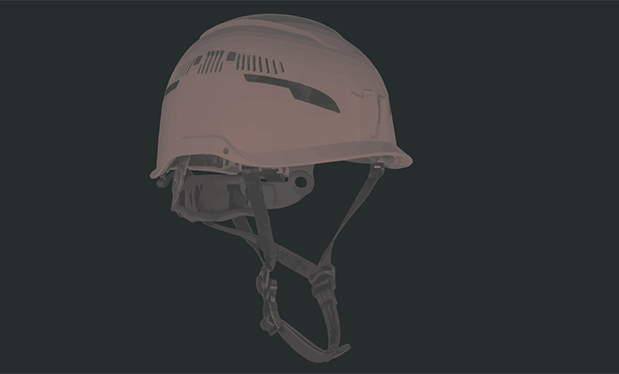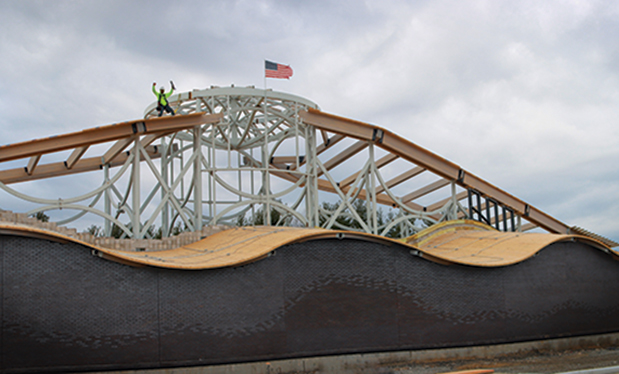
Although the International Code Council®’s International Fire Code® applies in most of the U.S., another fire code, NFPA 1, Fire Code also applies in some jurisdictions. NFPA 1 prescribes minimum requirements necessary to establish a reasonable level of fire and life safety and property protection from hazards created by fire, explosion and dangerous conditions; it applies to new and existing buildings.
Background
NFPA 1 originated in 1971 when members of the National Fire Protection Association requested a single document addressing all aspects of fire protection and prevention noted in other NFPA codes and standards.
During the late 1980s, the Fire Marshals Association of North America (now the International Fire Marshals Association) undertook the task of adding administrative sections to NFPA 1, making it a self-contained code. The 1992 edition was titled Fire Prevention Code.
Since 1997, NFPA has updated NFPA 1 on a three-year cycle. The 2003 and 2006 editions were titled Uniform Fire Code. In 2009, NFPA 1’s title changed to Fire Code, which is still used. The current edition of NFPA 1, Fire Code, is its 2024 edition.
The 2024 edition
NFPA 1’s 2024 edition is a 780-page document consisting of 75 chapters, six annexes and a comprehensive index. The annexes are not intended to be part of NFPA 1’s requirements unless specifically adopted by an authority having jurisdiction.
Annex A-Explanatory Material is an extensive, 201-page commentary-style explanation numbered to correspond to the applicable text paragraph.
NFPA 1 does not have a specific roofing chapter nor are the terms roof or roofing included in the index. Instead, roofing-related requirements are provided in other locations.
Chapter 3-Definitions includes several roofing-related terms used in the code, including fire watch, ground kettle, patch kettle and rubberized asphalt melter. For example, a patch kettle is defined as any pot or container with a capacity of less than 6 gallons used for preheating tar, asphalt pitch or similar substances used to repair roofs, streets, floors, pipes or similar objects.
Chapter 10-General Safety Requirements’ Section 10.2-Owner/Operator/Tenant Responsibilities indicates the owner, operator, tenant or authorized representative is responsible for code compliance.
Section 10.16-Outside Storage indicates combustible materials are not permitted within 10 feet of a property line; however, this distance can be reduced to 3 feet for storage not exceeding 6 feet in height. The distance can be reduced further where the authority having jurisdiction (fire code official) determines there is no hazard to the adjoining property.
In Chapter 11-Building Services, Section 11.12.2-Roof Mounted PV and BIPV Installations provides requirements for rooftop photovoltaic and building-integrated PV installations, including rapid shutdown; marking and labeling; rooftop access, perimeter pathways and smoke ventilation; and emergency escape and rescue opening requirements.
Chapter 16-Safeguarding Construction, Alteration and Demolition Operations includes specific requirements for fire safety during demolition and for torch-applied roof systems, tar kettles and rubberized asphalt melters.
For example, regarding demolition, Section 16.3.-Fire Safety During Demolition indicates combustible waste materials are required to be removed from a job site as often as necessary to minimize hazards. Regarding torch-applied roof system installation, Section 16.4-Torch-applied Roofing Systems indicates the authority having jurisdiction is authorized to require a permit for any roof torching work and torch-applied roof systems are required to comply with NFPA 241, Standard for Safeguarding Construction, Alteration and Demolition Operations.
Chapter 41-Welding, Cutting and Other Hot Work, Section 41.1.2(7) applies to torch-applied roofing in conjunction with Section 16.4. Chapter 41 requires compliance with NFPA 51B, Standard for Fire Prevention During Welding, Cutting and Other Hot Work and provides specific additional requirements for hot work permits, responsibility for hot work and fire watch and fire monitoring.
For example, Section 41.3.6-Fire Watch and Fire Monitoring indicates a fire watch is required to be maintained for at least one hour after completion of hot work operations to detect and extinguish smoldering fires. The duration of the fire watch is permitted to be reduced to no less than 30 minutes if the permit authorizing individual determines the absence of fire hazards warrants the reduction. Following the fire watch period, fire monitoring is required to be provided for up to an additional three hours as determined by the permit authorizing individual.
NFPA 241
NFPA 241 provides measures for preventing or minimizing fire damage during construction, alteration and demolition operations. The current edition is the 2022 edition.
NFPA 241’s Section 10.3-Single-ply and Torch-applied Roof Systems provides requirements for equipment usage and personnel qualifications; openings, penetrations and flashings; flame contact protection; installation; equipment and equipment inspection; fuel gas cylinders; fire watch and fire extinguishers. Section 10.3.9-Fire Watch requires a fire watch be conducted for at least two hours after torches are extinguished. It should be noted this is more stringent than NFPA 1’s one-hour or less fire watch requirement.
NFPA 51B
NFPA 51B provides minimum requirements for all people who manage, request, authorize, perform or supervise hot work. The current edition is the 2024 edition.
NFPA 51B’s Chapter 4-Responsibility for Hot Work provides requirements that can be interpreted to apply to torch-applied roof systems. Specific requirements are provided for management responsibility, the permit authorizing individual, hot work operators, fire watch, contractors and mutual responsibility. NFPA 51B’s requirements are generally similar to NFPA 1’s requirements.
Closing thoughts
Building owners and operators, roof system designers and roofing contractors should be aware of the applicable fire code (whether that be NFPA 1 or the IFC) and the specific edition that applies to the buildings they work on. All fire codes include roofing-specific provisions.
NFPA 1 and, by reference, NFPA 241 and NFPA 51A are reportedly adopted statewide by individual agencies or specific local jurisdictions in Alabama, Connecticut, Delaware, Florida, Hawaii, Kentucky, Louisiana, Maine, Maryland, Massachusetts, Michigan, Nebraska, New Hampshire, Rhode Island, Texas, Utah, Vermont, West Virginia and Wisconsin. Specific adoption information is accessible using NFPA’s Code Finder at codefinder.nfpa.org.
The IFC reportedly has been adopted by 31 states. A state list of IFC adoptions is accessible using ICC’s website, iccsafe.org, and entering “adoptions” in the search feature.
NFPA 1, NFPA 241 and NFPA 51A are available on NFPA’s website, nfpa.org.
MARK S. GRAHAM is NRCA’s vice president of technical services.
@MarkGrahamNRCA



